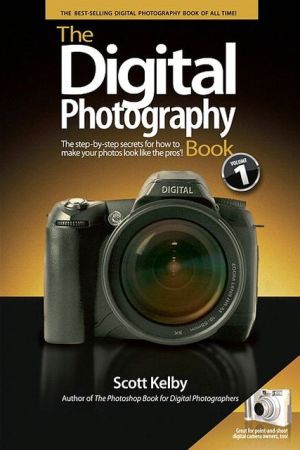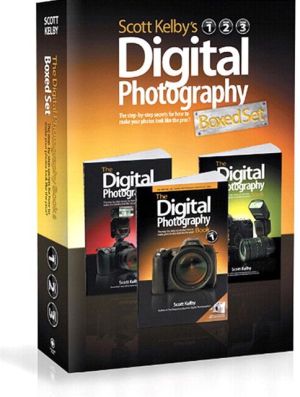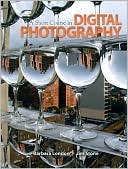Canon EOS Rebel XS/1000D For Dummies
The new Canon EOS Rebel XS is designed to capture the perfect photos. But if you’re new to SLRs, digital photography can be a bit intimidating. Canon EOS Rebel XS/1000D For Dummies shows you how to get the most out of this digital camera, taking advantage of its 10.1 megapixel CMOS sensor with DIGIC III image processor.\ This book offers explanations of all the controls and menus, suggestions to make using lenses a breeze, and picture-taking advice to give you the confidence to start shooting...
Search in google:
Get the most from your new Canon camera the fun and easy way®! It's a great camera, but if you're new to SLRs, the EOS Rebel XS/1000D might be just a bit intimidating. This book comes to the rescue with plain-English explanations of all the controls and menus, easy techniques to help you solve common picture problems, and plenty of advice to give you the confidence you need to start shooting fantastic photos. Enjoy great results from the get-go — take advantage of special automatic modes to quickly improve your photosLearn the lingo — master all the confusing digital photography terminology from file formats to f-stops Expose your creativity — explore advanced shooting modes to manipulate exposure, color, and focus like a proGo live — discover when and how to best use your camera's Live View featureShare your favorites — get step-by-step help to download, print, and share photos online with Canon's free softwareOpen the book and find:How to shoot beautiful portraitsCreative tips for capturing action, scenic vistas, and close-upsTen speedy retouching tricksWhat P, Tv, Av, M, and A-DEP modes do How to solve focus and exposure problemsWhat "noise" is and how to avoid it Easy ways to organize your photos using Canon ZoomBrowser EX/ImageBrowser
Introduction. A Quick Look at What’s Ahead. Part I: Fast Track to Super Snaps. Part II: Taking Creative Control. Part III: Working with Picture Files. Part IV: The Part of Tens. Icons and Other Stuff to Note. About the Software Shown in This Book. Practice, Be Patient, and Have Fun! Part I: Fast Track to Super Snaps. Chapter 1: Getting the Lay of the Land. Getting Comfortable with Your Lens. Attaching a lens. Removing a lens. Using an IS (image stabilizer) lens. Focusing and zooming the lens. Adjusting the Viewfi nder Focus. Working with Memory Cards. Exploring External Camera Controls. Topside controls. Back-of-the-body controls. Front-left buttons. Ordering from Camera Menus. Monitoring Critical Camera Settings. Decoding Viewfinder Data. Reviewing Basic Setup Options. Setup Menu 1. Setup Menu 2. Setup Menu 3. Three more customization options. Chapter 2: Taking Great Pictures, Automatically. Getting Good Point-and-Shoot Results. Using Flash in Automatic Exposure Modes. Exploring Your Automatic Options. Full Auto mode. Automatic scene modes (a.k.a. Image Zone modes). Changing the Drive Mode. Chapter 3: Controlling Picture Quality. Diagnosing Quality Problems. Decoding the Quality Options. Considering Resolution: Large, Medium, or Small? Pixels and print quality. Pixels and screen display size. Pixels and file size. Resolution recommendations. Understanding File Type (JPEG or Raw). JPEG: The imaging (and Web) standard. Raw (CR2): The purist’s choice. My take: Choose Fine or Raw . Chapter 4: Monitor Matters: Picture Playback and Live View Shooting. Disabling and Adjusting Instant Review. Viewing Images in Playback Mode. Jumping through images. Viewing multiple images at a time. Rotating vertical pictures. Zooming in for a closer view. Viewing Picture Data. Basic information modes. Shooting Information display. Understanding Histogram display mode. Deleting Photos. Erasing single images. Erasing all images on your memory card. Erasing selected images. Protecting Photos Using Your Monitor as a Viewfinder. Enabling Live View. Taking a shot in Live View mode. Customizing the Live View display Part II: Taking Creative Control. Chapter 5: Getting Creative with Exposure and Lighting. Kicking Your Camera into Advanced Gear. Introducing the Exposure Trio: Aperture, Shutter Speed, and ISO. Understanding exposure-setting side effects. Doing the exposure balancing act. Monitoring Exposure Settings. Choosing an Exposure Metering Mode. Setting ISO, f-stop, and Shutter Speed. Controlling ISO. Adjusting aperture and shutter speed. Overriding Autoexposure Results with Exposure Compensation.Disabling Auto Lighting Optimization. Locking Autoexposure Settings. Bracketing Exposures Automatically. Using Flash in Advanced Exposure Modes. Understanding your camera’s approach to flash. Adjusting flash power with fl ash exposure compensation. Locking the flash exposure. Exploring more flash options. Using an external flash unit. Chapter 6: Manipulating Focus and Color. Reviewing Focus Basics. Adjusting Autofocus Performance. Selecting an autofocus point. Changing the AF (autofocus) mode. Autofocusing in Live View Mode. Enabling Live View autofocusing. Live View autofocus option 1: Quick mode. Live View autofocus option 2: Live mode. Manipulating Depth of Field. Using A-DEP mode. Checking depth of field. Controlling Color. Correcting colors with white balance. Changing the white balance setting. Creating a custom white balance setting. Fine-tuning White Balance settings. Bracketing shots with white balance. Choosing a Color Space: sRGB vs. Adobe RGB. Exploring Picture Styles. Assessing the Picture Styles. Setting the Picture Style. Customizing Picture Styles. Creating your own Picture Style. Chapter 7: Putting It All Together. Recapping Basic Picture Settings. Setting Up for Specific Scenes. Shooting still portraits. Capturing action. Capturing scenic vistas. Capturing dynamic close-ups. Coping with Special Situations. Part III: Working with Picture Files.Chapter 8: Downloading, Organizing, and Archiving Your Photos. Sending Pictures to the Computer. Connecting camera and computer. Starting the transfer process. Downloading images with Canon tools. Using ZoomBrowser EX/ImageBrowser. Getting acquainted with the program. Viewing photos in full-screen mode. Organizing your photos. Exploring Other Software Options. Processing Raw (CR2) Files. Chapter 9: Printing and Sharing Your Photos. Avoiding Printing Problems. Check the pixel count before you print. Allow for different print proportions. Get print and monitor colors in sync. Printing Online or In-Store. Printing from ZoomBrowser EX/ImageBrowser. Preparing Pictures for E-Mail. Creating Web-friendly copies of Raw and TIFF photos. E-mailing photos from the browser. Creating an In-Camera Slide Show. Viewing Your Photos on a Television. Part IV: The Part of Tens. Chapter 10: Ten Fast Photo-Editing Tricks. Removing Red-Eye. Cropping Your Photo. Adjusting Color Saturation. Tweaking Color Balance. Adjusting Exposure. Three-point exposure control with the Level Adjustment filter. Gaining more control with the Tone Curve Adjustment filter. Sharpening Focus (Sort Of). Shifting to AutoPilot. Adding Text. Saving Your Edited Files. Chapter 11: Ten Special-Purpose Features to Explore on a Rainy Day. Changing the Function of the Set Button. Customizing Exposure and Focus Lock Options. Disabling the AF-Assist Beam. Enabling Mirror Lockup. Adding Cleaning Instructions to Images. Turning Off the Shooting Settings Screen. Creating Desktop Wallpaper. Adding Original Decision Data. Creating Your Very Own Camera Menu. Getting Free Help and Creative Ideas. Index.








